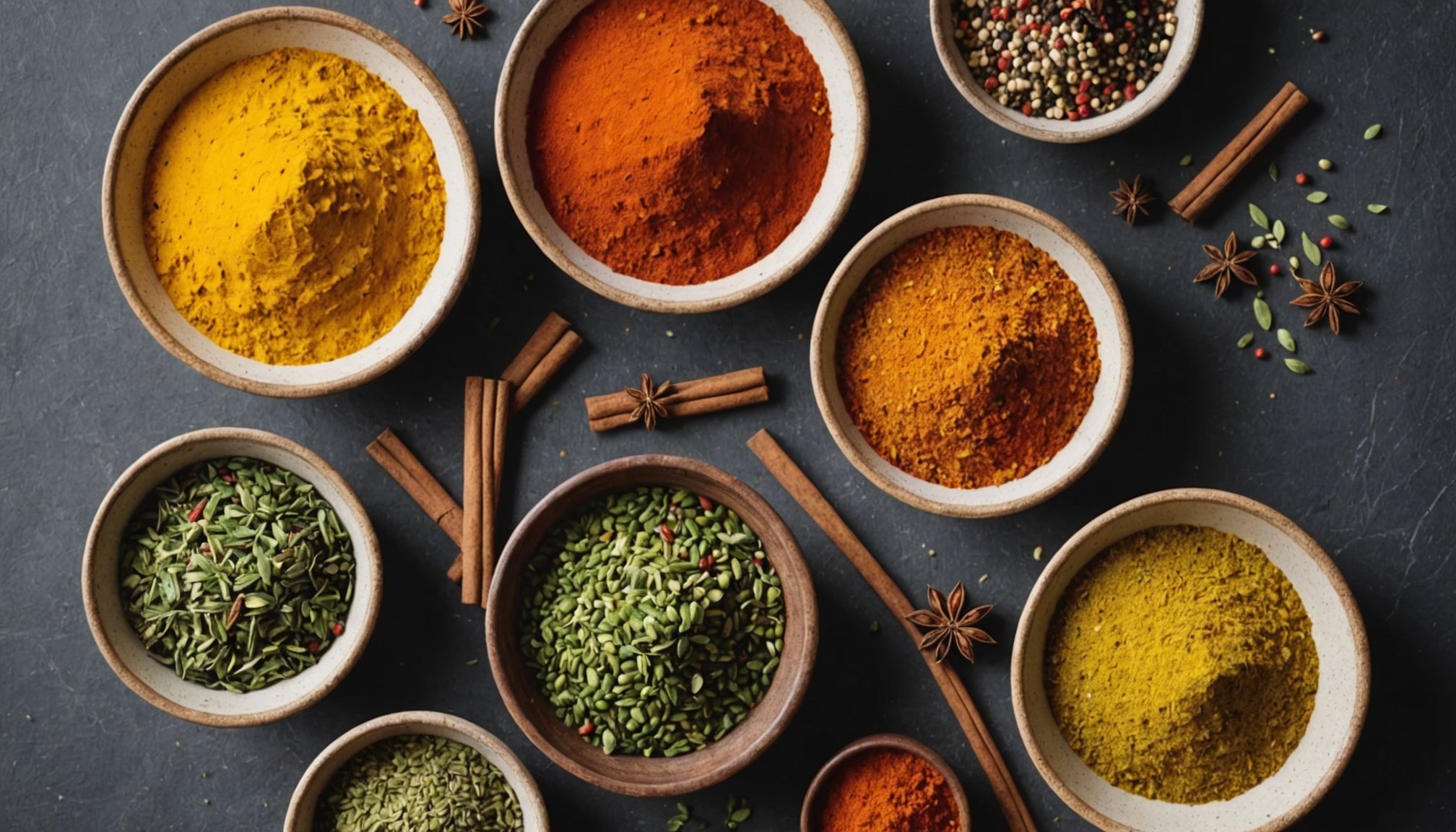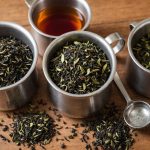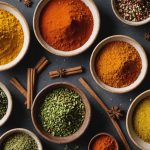Elevate your cooking game with essential spices that promise to transform everyday meals into exciting culinary experiences. A well-stocked spice cabinet is vital for any home cook in the UK, allowing you to explore diverse flavors and elevate even the simplest dishes. This guide highlights key spices that not only enhance taste but also inspire creativity in the kitchen. Discover how the right seasonings can make your meals more enjoyable, ensuring you serve up deliciousness every time.
Essential Spices for UK Home Cooks
Understanding the essential spices for UK home cooking can transform ordinary dishes into culinary masterpieces. Spices are integral to enhancing flavor profiles, offering depth and complexity to meals. Here’s a glimpse into the most commonly used spices in UK kitchens:
Additional reading : Essential Guide to Selecting the Perfect Kitchen Hood in the UK: Key Factors to Consider
Commonly Used Spices
- Black Pepper: A staple in every UK household, black pepper adds a subtle heat and enhances the natural flavors of food.
- Turmeric: Known for its earthy taste and vibrant color, turmeric is often used in curries and stews.
- Cinnamon: This warm, sweet spice is perfect for both sweet and savory dishes, adding a comforting aroma.
Importance of Spices
Spices are not just about taste; they also play a crucial role in the culinary essentials of UK home cooking by providing antioxidants and other health benefits. They allow cooks to experiment with textures and flavors, making every meal exciting.
Regional Variations
The use of spices can vary significantly across the UK. For example, Scottish cuisine often incorporates nutmeg and allspice, while Welsh dishes may feature more mustard and garlic. These regional differences highlight the diversity within UK home cooking.
Also read : Discover the Top Anti-Slip Floor Mats for Commercial Kitchens in the UK: Safety and Style Combined!
Incorporating these essential spices into your cooking can elevate your dishes, making them more flavorful and enjoyable.
Flavor Profiles and Culinary Uses
Understanding the flavor profiles of spices is crucial for enhancing your cooking. Each spice offers unique characteristics that can transform dishes.
Detailed Descriptions
-
Black Pepper: Known for its sharp, pungent flavor profile, black pepper is versatile. It adds warmth and depth to both savory and sweet dishes.
-
Turmeric: This spice has a flavor profile described as earthy and slightly bitter. It’s perfect for adding color and complexity to curries and rice dishes.
-
Cinnamon: With its sweet and spicy flavor profile, cinnamon complements both sweet treats and savory meals, like stews and roasts.
Culinary Uses
-
Black Pepper: Commonly used in seasoning meats, soups, and salads. It pairs well with lemon for a fresh touch.
-
Turmeric: Ideal for curries, soups, and teas. It can be combined with cumin for a robust cooking use.
-
Cinnamon: Often used in baking, it enhances the taste of pastries and cereals. Try pairing it with apples for a classic cooking use.
Tips for Pairing
- Experiment with black pepper and garlic for a bold kick.
- Combine turmeric with ginger for a warming effect.
- Use cinnamon with nutmeg for a comforting aroma.
These insights can help you master the art of spice pairing, elevating everyday meals.
Health Benefits of Essential Spices
Exploring the nutritional advantages of spices can enhance wellness and dietary balance.
Overview of Health Benefits
Incorporating essential spices into your diet offers numerous health benefits. Spices like turmeric are renowned for their anti-inflammatory properties, making them ideal for reducing inflammation and supporting joint health. Similarly, black pepper can aid digestion by stimulating the production of digestive enzymes, enhancing nutrient absorption.
Nutritional Advantages
Many spices are rich in antioxidants, contributing to overall wellness. For instance, cinnamon is known for its ability to regulate blood sugar levels, which is beneficial for individuals managing diabetes. Additionally, spices such as ginger can relieve nausea and improve digestion, offering a natural remedy for common ailments.
Incorporating Spices into Your Diet
To maximize the nutritional advantages of spices, consider adding them to a balanced diet. Here are some practical ways to incorporate these health benefits:
- Add turmeric to smoothies or teas for an anti-inflammatory boost.
- Use black pepper in marinades to enhance flavor and digestion.
- Sprinkle cinnamon on oatmeal or yogurt for a sweet, healthful treat.
By integrating these spices into daily meals, you can enjoy their health benefits while enhancing the taste and complexity of your dishes.
Practical Cooking Tips
Enhance your culinary skills with these practical tips for spice usage.
Incorporating Spices
Transform your everyday cooking with practical advice on how to incorporate spices. Start by adding small amounts of a new spice to familiar dishes. This allows you to gauge its impact without overpowering the meal. For example, a pinch of cinnamon can add depth to a tomato sauce, while a dash of turmeric can brighten up a vegetable stir-fry.
Balancing Flavors
Balancing flavors is key to mastering culinary skills. To avoid overpowering dishes, consider the strength of each spice. Black pepper adds heat, so use it sparingly in delicate dishes. Conversely, turmeric has a milder flavor and can be used more liberally. A helpful technique is to pair a strong spice with a milder one, such as cinnamon with nutmeg, to create a harmonious blend.
Experimenting with Spices
Experimenting with spices can significantly enhance your culinary skills. Try creating your own spice blends, like a mix of black pepper, turmeric, and cumin for a robust seasoning. Use this blend to season roasted vegetables or grilled meats, allowing you to explore new flavor dimensions.
- Start small: Introduce one new spice at a time.
- Pair wisely: Combine strong and mild spices.
- Create blends: Mix spices for unique flavors.
Storing and Maintaining Spices
Unlock the secrets to keeping your spices fresh and your kitchen organized.
Best Practices for Spice Storage
To maintain the freshness and potency of your spices, proper storage is essential. Keep spices in a cool, dark place away from direct sunlight and heat. Use airtight containers to prevent moisture and air exposure, which can degrade quality. Glass jars with tight-fitting lids are ideal for preserving aroma and flavor.
Organizing Spices for Easy Access
An organized kitchen makes cooking more enjoyable. Arrange your spices by category or frequency of use. Consider a spice rack or drawer inserts for easy access. Label jars clearly to save time during meal preparation. A well-organized spice collection not only enhances efficiency but also inspires creativity in cooking.
Identifying When Spices Need Replacement
Spices lose their effectiveness over time. To determine if a spice is past its prime, check for faded color or diminished aroma. Whole spices generally last longer than ground varieties. Here’s a quick guide:
| Spice Type | Shelf Life |
|---|---|
| Whole Spices | 2-4 years |
| Ground Spices | 1-2 years |
| Herbs | 1-3 years |
Replace spices regularly to ensure your dishes are flavorful and aromatic. By following these guidelines, you can maintain a vibrant and efficient kitchen.
Regional Variations in Spice Usage
Exploring the diverse spice preferences across the UK regions.
Regional Spices in UK Culinary Traditions
The UK’s culinary traditions are enriched by varied regional spices that define local flavor profiles. Each region has its distinct spice preferences, influenced by historical and cultural factors. In Scottish cuisine, nutmeg and allspice are prominent, offering a warm, aromatic touch to traditional dishes like haggis. Meanwhile, Welsh kitchens frequently use mustard and garlic, providing a robust flavor to their savory pies.
Local Dishes Highlighting Specific Spices
Local dishes across the UK showcase the unique regional spices that define their culinary traditions. For instance, the use of coriander and cumin in Birmingham’s famous Balti dishes reflects the city’s rich cultural diversity. In Cornwall, saffron is a key ingredient in their celebrated saffron buns, contributing a distinct aroma and vibrant color.
Influence of Cultural Diversity
The cultural diversity within the UK has significantly influenced contemporary spice use. Immigrant communities have introduced regional spices from their homelands, enriching the UK’s culinary traditions. This fusion of flavors is evident in modern British cuisine, where spices like cardamom and ginger are now staples in many households. This dynamic blend of local flavor profiles continues to evolve, reflecting the UK’s multicultural tapestry.











